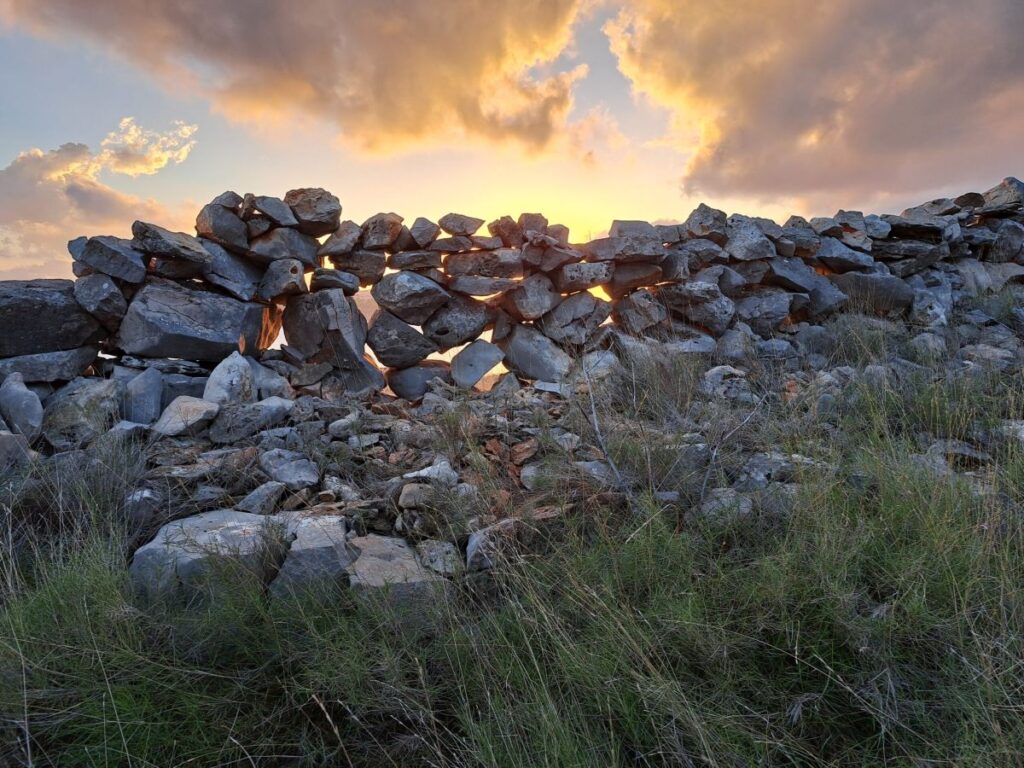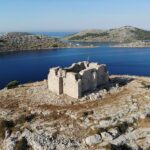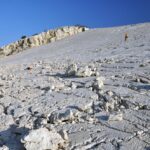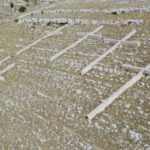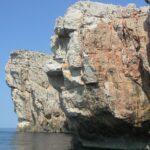More than mere landscape features, the dry stone walls in Kornati stand as a testament to the region’s rich history and the incredible resilience of its people. These awe-inspiring structures, gracefully dividing pastures and olive groves, span a staggering 323 kilometers within the boundaries of Kornati National Park, with 90 kilometers dedicated solely to pasture fences. Join us as we explore Kornati’s dry stone walls, delving into their exceptional construction, the tenacity behind their creation, and their timeless charm that continues to captivate visitors from every corner of the world.
The Two Main Types of Kornati Dry Stone Walls
We can divide the dry stone walls in Kornati into two primary groups: those separating pastures and those separating olive groves. Shepards from Murter built dry stone walls in Kornati during the challenging acquisition of land holdings during the latter half of the 19th century. These walls are iconic features of the Kornati landscape. You can still find them on various islands within the archipelago.
A comprehensive georeferenced survey has established the existence of 323 kilometers of dry stone walls within the Kornati National Park, with 90 kilometers dedicated to pasture fences.
The Unique Construction of Kornati’s Dry Stone Walls
Compared to other pasture fences found throughout Croatia, Kornati’s dry stone walls are distinct for their ability to integrate natural barriers such as cliffs into their design seamlessly. Each wall showcases ingenious, on-the-spot solutions that enable it to overcome the landscape’s challenges and maintain the desired layout. This innovative approach to construction makes Kornati’s dry stone walls a fascinating study of human adaptability and resourcefulness.
Constructing the Walls: A Testament to Human Resilience
Building these dry stone walls required immense time and effort. Two skilled builders could construct a 2-kilometer-long wall (2 meters high and 50-80 cm thick) in 150-200 days. Engaging in this backbreaking work, the builders labored during the day in winter and at night in summer to avoid the scorching heat.
The Intricate Architecture
A striking aspect of Kornati’s dry stone walls is their distinct orientation, which sets them apart from the rest. As the larger islands were elongated, the walls were constructed from one side of the island to the other.
Dry stone walls in Kornati are high enough so sheep cannot jump over and thick enough so wind cannot damage them.
These walls were meticulously built without mortar, relying on the interlocking of stones to ensure structural integrity.
The Enduring Allure
Kornati’s pasture dry walls, which divide family properties across the islands, are among the most iconic landscape scenes in Croatia. Together with the region’s cliffs, these walls form the cornerstone of the country’s visual presentation. They are a significant attraction for visitors to the Kornati National Park.
Tracing the History of Kornati’s Dry Stone Walls
The earliest land demarcations in Kornati date back to the 15th century and took the form of drywall markings rather than continuous walls.
However, it was only with the arrival of the shepherds from Murter in the 17th century that complete fences were constructed. These shepherds purchased land from feudal owners between 1851 and 1896, creating 48 distinct walls on the island of Kornat alone.
Celebrating the Timeless Legacy of Kornati’s Dry Stone Walls
As our journey through the enchanting world of Kornati’s dry stone walls draws close, we are left with a profound appreciation for these remarkable structures. More than just a beautiful aspect of the landscape, these walls embody the rich history and indomitable spirit of the region’s people. With a staggering 323 kilometers of walls crisscrossing the Kornati National Park, they continue to serve as a testament to human ingenuity and resilience.
From their unique construction that seamlessly incorporates the region’s natural barriers to the sheer determination required to create them, Kornati’s dry stone walls exemplify the human spirit’s adaptability and resourcefulness. As we leave behind these iconic symbols of Croatia’s heritage, we are reminded that their timeless allure continues to captivate visitors from around the globe. As you explore the Kornati National Park and marvel at these awe-inspiring walls, take a moment to appreciate the incredible legacy they represent – a legacy that will endure for generations to come.
